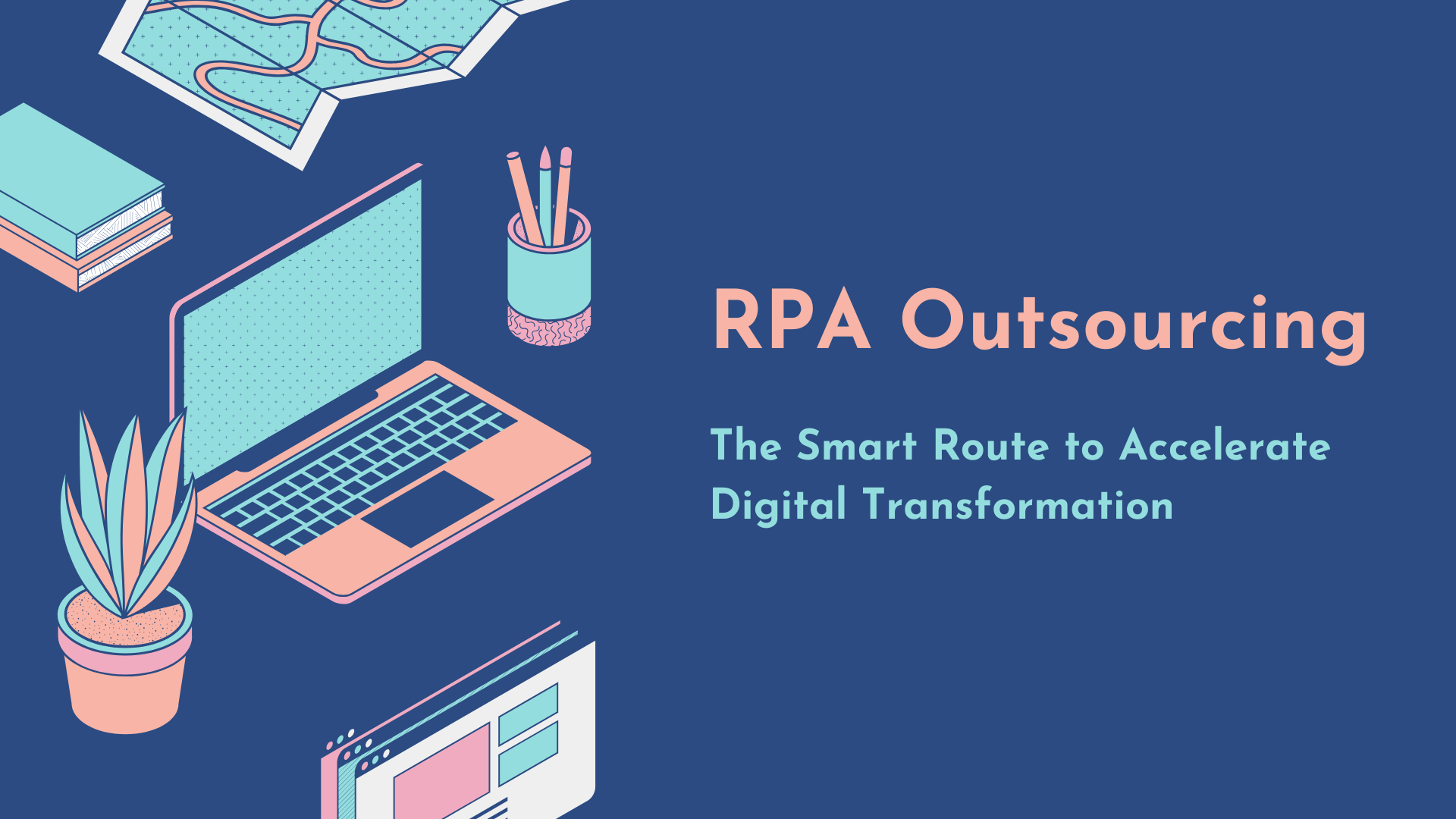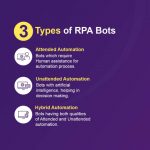As businesses accelerate their digital transformation, automation has become a key enabler of speed and scalability. Yet building RPA capabilities in-house often proves challenging – from high setup costs and limited expertise to ongoing maintenance.
RPA outsourcing provides a smarter path forward, enabling companies to leverage external expertise, proven frameworks, and expedited implementation. Beyond automating repetitive tasks, outsourcing helps organizations transform how data is collected, processed, and utilized – turning operational efficiency into strategic insight and freeing internal teams to focus on innovation and value creation.
What Is RPA Outsourcing?
At its core, RPA outsourcing involves engaging an external partner to assume responsibility for one or more stages of the automation lifecycle, from process selection and bot development to deployment, monitoring, and continuous improvement. Unlike the traditional in-house model, outsourcing allows organizations to tap into ready-made expertise, pre-built frameworks, and economies of scale.
Common models include:
- Full outsourcing: The vendor handles the entire automation lifecycle – the client provides process details, and the partner delivers and operates the bots.
- Co-managed automation: A hybrid model where internal staff collaborate with the vendor, sharing responsibilities for strategy, governance, and maintenance.
- BOT-as-a-Service (BaaS): A subscription-based model providing on-demand automation, ideal for high-volume or seasonal workloads.
Choosing between in-house and outsourced automation depends on priorities: control vs. speed, upfront investment vs. operational cost, internal capability vs. external expertise. In many data-intensive or transformation-driven programs, outsourcing stands out for its ability to accelerate implementation and reduce complexity.
How RPA Outsourcing Accelerates Digital & Data Transformation
1. Transforming Traditional Data Entry into Intelligent Workflows
RPA outsourcing enables organizations to move beyond manual data entry to intelligent workflows that extract, validate, and structure data for analytics. By combining RPA with AI or Intelligent Document Processing (IDP) tools such as OCR or pattern recognition, external providers help handle both structured and unstructured data. Instead of merely automating keystrokes, businesses gain clean, analytics-ready data for real-time decision-making.
2. Speed to Value
External RPA teams bring proven experience and reusable assets, leading to faster deployment – sometimes within weeks. The sooner bots go live, the quicker businesses can benefit from time savings, improved accuracy, and operational scalability.
3. Cost Reduction and Efficiency
Outsourcing removes the need for heavy investments in infrastructure, licensing, and talent acquisition. Vendors manage the full bot lifecycle, allowing internal teams to focus on innovation rather than maintenance.
4. Improved Data Quality and Analytics Readiness
Automated data capture ensures accuracy, consistency, and completeness – creating reliable inputs for analytics, forecasting, and Gen AI applications. Many outsourcing partners include built-in governance and audit capabilities to ensure traceability and compliance.
5. Scalability and Flexibility
Outsourced models make it easy to scale automation capacity up or down with business demand. During seasonal peaks, providers can deploy additional bots quickly, ensuring continuity without extra hiring or training.
6. Shifting Workforce Value
Automation liberates employees from repetitive work, empowering them to focus on higher-value analysis and strategy. This shift in focus fosters a more data-driven, innovation-oriented culture – a cornerstone of digital transformation.
Real-World Case Studies
Case study 1: Transportation & Logistics Company
Challenges
- Heavy reliance on manual data entry for dispatch, HR, and accounting.
- Fragmented data across Excel sheets and internal systems, causing delays.
- Labor shortage and overdependence on specific employees.
- Limited automation expertise within the organization.
Solutions
- Adopted WinActor RPA to automate data aggregation and system input tasks.
- Partnered with an external RPA outsourcing team for process analysis, bot design, and staff training.
- Expanded automation gradually across multiple departments (HR, accounting, general affairs).
- Empowered non-IT employees to build and manage bots using WinActor’s easy-to-use interface.
Results
- 166 hours saved per month after the first automation phase.
- 80 RPA scenarios implemented company-wide within two years
- Major reduction in repetitive work; employees shifted to higher-value activities.
- Enhanced cross-department collaboration and stronger digital transformation culture.
Technologies Used
- WinActor RPA – core automation tool.
- Microsoft Excel – automated data aggregation and processing.
- Windows-based business systems – integrated through RPA workflows.
- File and email automation – for data import/export and coordination between teams.
Case study 2: Finances & Banking
Challenges
- Persistent reliance on paper-based workflows in departments such as housing loan processing and inquiry handling.
- Manual input for a single application required 30–60 minutes in the inquiry department; processing 10 applications with automation still reduced time by ~65%.
- Adoption of cloud-based AI-OCR raised security and compliance concerns due to sensitive customer data.
Solutions
- Deployed WinActor RPA across 82 business processes by March 2021, automating online applications, system operations and data entry.
- Implemented DX Suite (AI-OCR) on a cloud platform (AWS) to digitise paper forms and extract structured data for WinActor automation.
- Introduced robust security measures: restricted IP access, monitored traffic, verified provider on 30+ criteria, ensuring compliance with banking standards.
Results
- Reduced manual workload by 26,737 hours across the 82 automated processes.
- In batch processing (e.g., 10 housing-loan applications), achieved ~65% time reduction versus manual handling.
- Freed staff to focus on sales and customer-facing activities; improved operational agility & data handling.
Technologies Used
- WinActor RPA for process automation.
- DX Suite (AI-OCR) for converting paper documents into structured data.
- Cloud platform (AWS) for hosting AI-OCR and ensuring scalability and security.
- Governance & access controls to meet financial-sector compliance.
Case Study 3: HR Department
Challenges
- Time-consuming manual process (~24 hours/year): HR staff spent significant time on manual attendance checks and discrepancy management.
- Prone to human errors: Manual verification often led to data inaccuracies and delays.
- Inefficient multi-system workflow: Disconnected systems (Excel, Access, attendance logs) caused redundancies.
- Inflexible threshold adjustments: Changing attendance discrepancy thresholds (e.g., 30 → 20 minutes) required manual editing, slowing response times.
Solutions
- Automatic login and data extraction: RPA automated logins and data retrieval from various systems, improving speed and accuracy.
- Reading thresholds and periods from Excel: Automated reading and processing of attendance data directly from Excel.
- Automated matching and notification generation: Robots detected inconsistencies and automatically notified department heads.
- Email communication automation: RPA handled email sorting, responses, and reminders, reducing manual communication work.
Results
- 88% time reduction: Annual workload dropped from 24 hours to 3 hours per year.
- 100% error elimination: RPA achieved flawless accuracy in attendance data processing.
- Improved HR efficiency: Freed HR staff from repetitive data work, enabling focus on strategic workforce planning.
Technologies Used
- WinActor RPA: Core automation for login, data extraction, and workflow coordination.
- Microsoft Excel & Access: Data sources integrated within automated processes.
- Email client integration: Automated HR communication and discrepancy alerts.
Conclusion
Outsourcing RPA and data automation services offers an even greater advantage: access to specialized expertise, rapid deployment, and scalable support – allowing companies to advance their digital transformation journey without overloading internal IT resources.
Whether your goal is to streamline data handling, modernize legacy workflows, or scale automation across departments, our team can help you identify the right starting point.
Book a free consultation with our RPA experts to discover how WinActor’s automation and AI-powered solutions can accelerate your organization’s digital transformation.





